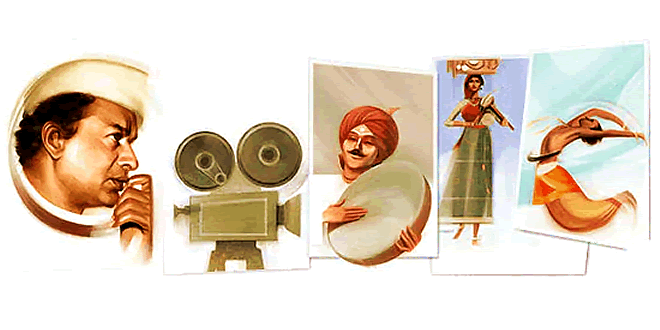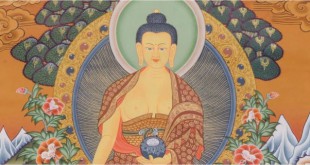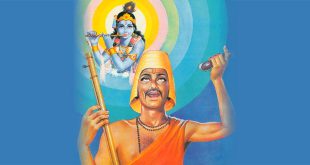Died: 30 October 1990, Mumbai, Maharashtra, India
Children: Rajshree, Kiran Shantaram, Madhura Pandit
Awards: Padma Vibhushan, Dadasaheb Phalke Award
Spouse: Sandhya Shantaram (m. 1956–1990), Jayashree
V. Shantaram (original name Shantaram Rajaram Vankudre and fondly called Annasaheb) (1901-1990) was a legendary filmmaker from whose sensitive imagination, some indelible images of Indian cinema came. His films stood out for their originality and a passionate commitment to human values right from the days of black & white silent films to advent of sound and colour.
V. Shantaram: Brief Biography
V. Shantaram was born on 18 November 1901 in Kolhapur in a Jain family. He had married thrice. His daughter Madhura from his first wife Vimla is married to Pandit Jasraj.
His film career began doing small-time jobs in Maharashtra Film Company of Baburao Painter. In 1921, he debuted as an actor in the silent movie Surekha Haran. For next six decades, he had an illustrious career of a film maker. He was one of the first film makers to realize films as media of social change and used it successfully for exposing bigotry and injustice. His work helped him to win many accolades including Dadasaheb Phalke Award in 1985 and Padma Vibhushan in 1992. He died on 30 October 1990. The Central and Maharashtra state government instituted the V. Shantaram Award in his memory. This award is presented every year on 18th November.
V. Shantaram: Important Movies
His movies as actor include Sinhagad (1923), Savkari Pash (1925), Stri (1961), Parchhain (1952) and Do Ankhen Barah Haath (1957).
His movies as producer included Banwasi (1948), Sehra (1963), Geet Gaya Patharon Ne (1964), Ladki Sahyadri Ki (1966), Jal Bin Machhli Nritya Bin Bijli (1971), Raja Rani Ko Chahiye Pasina (1978) and Jhanjhaar (1987)
As Director, his movies included Netaji Palkar (1927), Gopal Krishna (1929), Udaykal (1930), Rani Saheba (1930), Khooni Khanjar (1930), Chandrasena (1931), Maya Machindra (1932), Agnikankan (1932), Ayodhyecha Raja (1932), Sinhagad (1933), Sairandhri (1933), Amrit Manthan (1934), Dharmatma (1935), Chandrasena (1935), Amar Jyoti (1936), Duniya Na Mane (1937), Kunku (1937), Manoos (1939), Aadmi (1939)[19], Padosi (1941), Shakuntala (1943), Parbat Pe Apna Dera (1944), Dr. Kotnis Ki Amar Kahani (1946), Lokshahir Ram Joshi (1947), Apna Desh (1949), Dahej (1950), Amar Bhoopali (1951), Parchhain (1952), Teen Batti Char Raasta (1953), Surang (1953), Subah Ka Tara (1954), Jhanak Jhanak Payal Baaje (1955), Toofan Aur Diya (1956), Do Aankhen Barah Haath (1957), Navrang (1959), Stree (1961), Sehra (1963), Geet Gaya Patharon Ne (1964), Ladki Sahyadri Ki (1966), Boond Jo Ban Gayee Moti (1967), Jal Bin Machhli Nritya Bin Bijli (1971), Pinjra (1973) and Jhanjhaar (1987).
V. Shantaram: Facts and Trivia
- The popular bhajan “ऐ मालिक तेरे बंदे हम” is from V. Shantaram’s Do Ankhen Barah Haath. This bhajan was written by Bharat Vyas and its music was given by Vasant Desai.
- In the movie Manoos, V. Shantaram used nights and shadows to enhance the narration. It was one of the pioneering technique in those days.
- India’s first children’s film Rani Sahiba (1930) was a product of V. Shantaram.
- India’s first colour film Sairandhari (1933) was also produced by V. Shantaram but technically, this was not a success. The film was colored in Germany but the technique failed so it was released in black and white only. The first colour film to be produced and processed in India was Kisan Kanya (1937).
- In Amrit Manthan (1934), V. Shantaram became the first film maker to use telephoto lens. He is also credited for first film of India to be shown abroad (Dr. Kotnis Ki Amar Kahani).
- He also established two studios viz. Prabhat and Rajkamal.
 Kids Portal For Parents India Kids Network
Kids Portal For Parents India Kids Network







